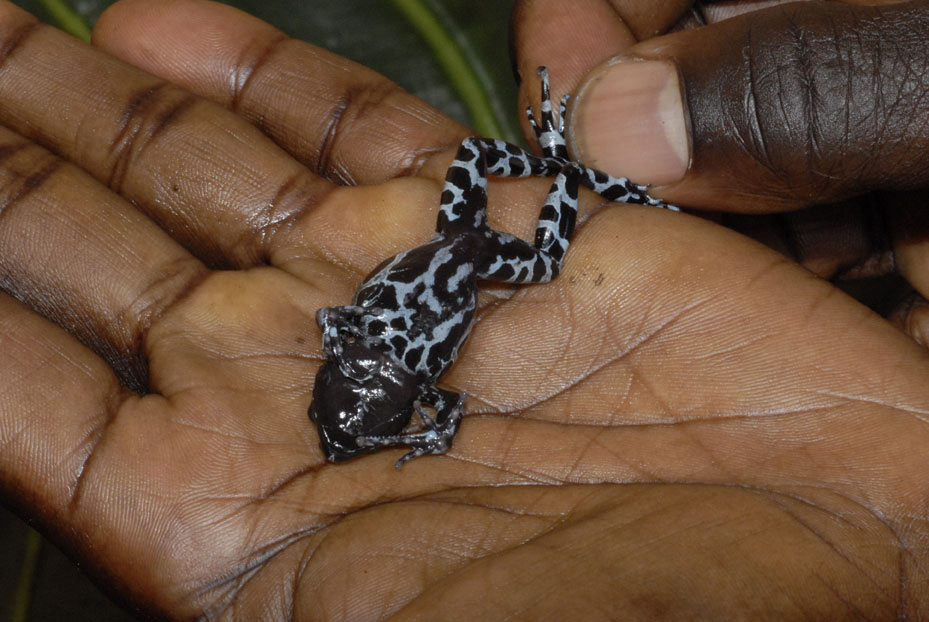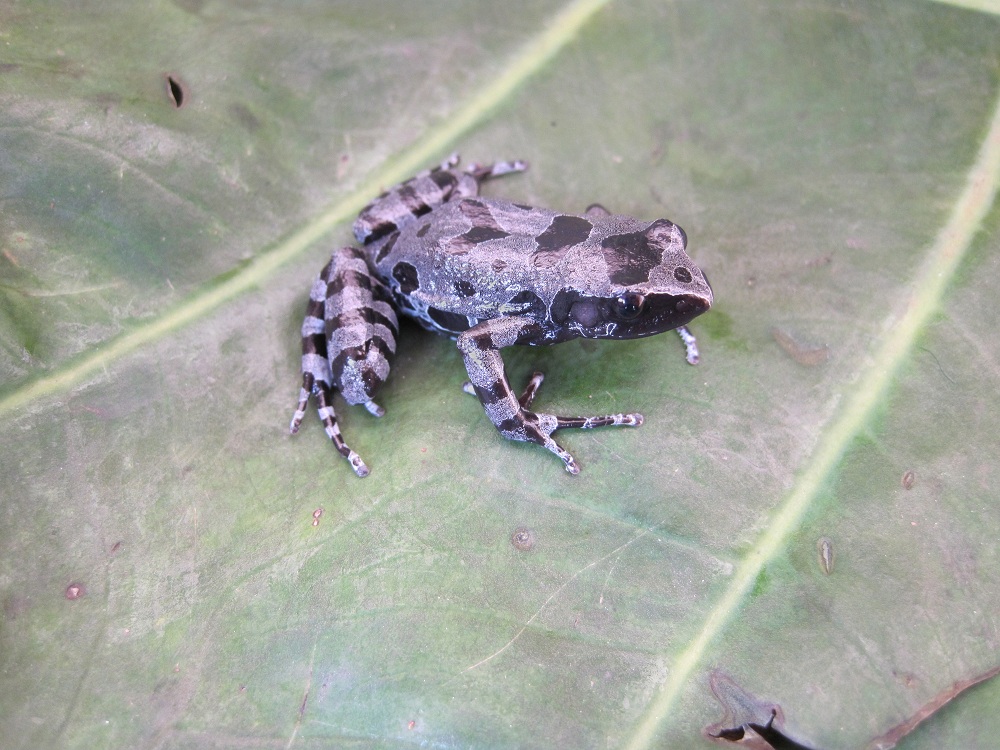Mysterious Long-Fingered Frog Comes Out of Hiding


A long-fingered frog last seen in 1949 and feared extinct has come out of hiding in the forests of Burundi, a small country in eastern Africa, scientists reported this week.
Called the Bururi long-fingered frog (Cardioglossa cyaneospila), the amphibian is about 1.5 inches (3.8 centimeters) long, with a black and bluish-gray coloration. They knew the individual discovered was a male, because only the males of this species sport a "ring finger," one extra-long digit on each foot with spines running along it; scientists aren't sure what this lengthy digit is used for.
David Blackburn of the California Academy of Sciences and Eli Greenbaum of the University of Texas at El Paso spotted the elusive frog during a December 2011 expedition to the Bururi Forest Reserve. It was on their fifth night in the forest that Blackburn heard a frog call; they had hoped it would do so like its closest living relative in Cameroon. [Mug Shots: 10 Lost Amphibians]
"I thought I heard the call and walked toward it, then waited," Blackburn said. "In a tremendous stroke of luck, I casually moved aside some grass and the frog was just sitting there on a log."
The frogs seem to have chosen for their habitat an intriguing spot, at least for geologists, as Burundi borders the vast Congo River Basin, the Great Rift Valley (a 6,000-mile crack in the Earth's crust) and Lake Tanganyika, the world's second-largest freshwater lake.
Though the researchers aren't sure how many of the tiny frogs of this species live in the geologic haven, the multiple calls they heard suggest a good-size group. "At this point, we don't have an idea of the size of this population, though I would say that we easily heard dozens of calling males in the tiny bit of stream (only one small part of a very large forest) where we found this animal," Blackburn told LiveScience in an email.
The frog specimen now resides in the herpetology collection at the California Academy of Sciences; the researchers say they can use it for genetic studies to figure out how long C. cyaneospila and its relatives in Cameroon have been genetically isolated from each other.
Get the world’s most fascinating discoveries delivered straight to your inbox.
Blackburn and Greenbaum have also found dozens of other amphibians in Burundi, many of which had never been identified in the country. They also discovered some "new" species that had yet to be identified.
"Because Burundi is poorly explored, we've probably doubled the number of amphibian species known from the country," Greenbaum said in a statement. "Once we demonstrate that Burundi contains rare and endemic species, we can work with the local community to make a strong case for preserving their remaining natural habitats."
Follow LiveScience for the latest in science news and discoveries on Twitter @livescience and on Facebook.
Jeanna Bryner is managing editor of Scientific American. Previously she was editor in chief of Live Science and, prior to that, an editor at Scholastic's Science World magazine. Bryner has an English degree from Salisbury University, a master's degree in biogeochemistry and environmental sciences from the University of Maryland and a graduate science journalism degree from New York University. She has worked as a biologist in Florida, where she monitored wetlands and did field surveys for endangered species, including the gorgeous Florida Scrub Jay. She also received an ocean sciences journalism fellowship from the Woods Hole Oceanographic Institution. She is a firm believer that science is for everyone and that just about everything can be viewed through the lens of science.



